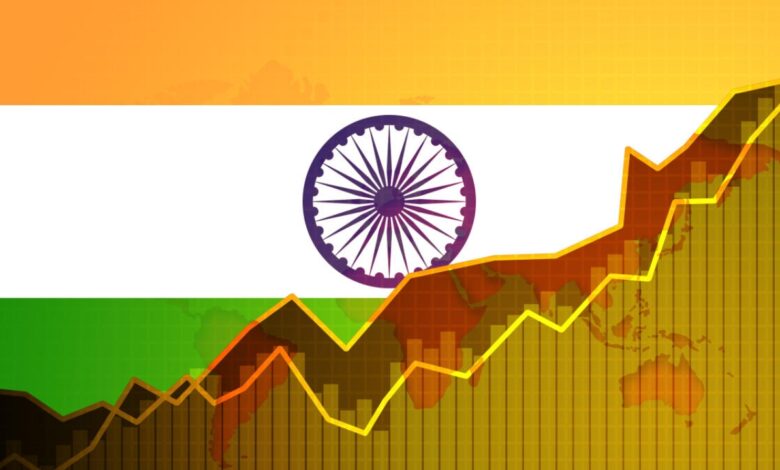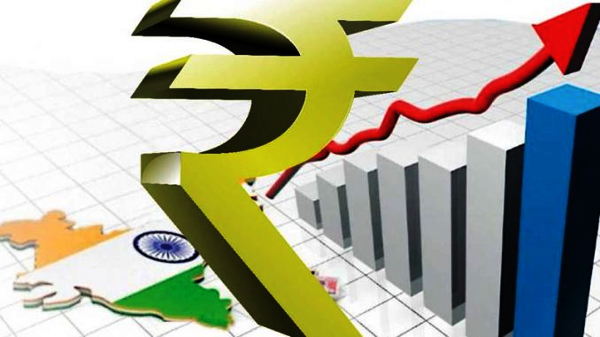GDP growth is good; there is obvious faultiness in the future.

GDP growth is good; there is obvious faultiness in the future. In its first advanced estimate (AE) of the national income, the National Statistical Office (NSO) of the Ministry of Statistics and Programme Implementation projects that the Indian economy would expand by 7% in FY23. This is 20 basis points (bp) more than the 6.8% prediction provided by the Reserve Bank of India and the International Monetary Fund. In FY23, analysts, investors, and international organizations expect India’s economy to grow by 6.5 to 7.0 percent.
The AE for FY23 is based on the first half’s economic performance and the second half’s probable trajectory (2H). For the creation of the FY23 Union Budget, the AE statistics for FY23 are a crucial input. At the end of February, these estimates will be updated to reflect the corporate sector’s performance in the third quarter (3QFY23) and presented as the second advanced estimate of national income.
The first AE forecasted 9. 2 percent GDP growth for FY22 last year, while the second AE reduced that forecast to 8.9 percent. The growth for FY21 was also reduced from -7.7 percentage withinside the first AE to -8.zero percentage withinside the 2d AE.
GDP growth is anticipated to slow to 4.5 percent in 2HFY23 from 9.7 percent in the first half of FY23 as the base impact gradually diminishes. However, India will be one of a select few countries rising rapidly on an annual basis, with a GDP growth rate of 7%.
The first alarming tendency is that all major demand components of GDP, except government final consumption expenditure (GFCE), are anticipated to slow down substantially in the second half compared to the first half. After increasing 17. 2 percent y-o-y in the first half of FY23, private final consumption expenditure (PFCE), the largest component of demand (FY23: 57.2%), is anticipated to decline by 0.2 percentage y-o-y withinside the 2nd half. In the second half of FY23, the gross fixed capital formation (GFCF), which increased by 15% in the first half, is predicted to contract to 8.4% year over year.
Shockingly, there was a surprisingly little genuine increase in exports of products and services despite the global challenges. After increasing by 13 percent in the first half, it is predicted to drop to 11.9 percent year over year in the second half. In contrast, it is anticipated that imports of goods and services would decline significantly in the second half of FY23, from a real rise of 30.9 percent in the first half to 12.2 percent y-o-y. Only GFCE growth, which often shows the government backloading current spending, is anticipated to increase to 7.2 percent y-o-y in 2HFY23 from a decline of 1.3 percent in the first half.
The seeming dramatic contrast between the PFCE growth rates for FY23’s first and second halves shows that consumer demand has not yet diversified and become sustained. FMCG sales imply sluggish demand, but vehicle sales figures indicate a robust demand resurgence. This reflects the nature of the changing consumer demand in the post-pandemic period, which is heavily weighted in favor of products and services bought mostly by households with higher incomes.
In contrast to the first half’s 9 percent growth, the second half’s gross value addition (GVA) is predicted to increase by only 4.7 percent year over year. Interestingly, a significant decline in net product taxes will cause GDP growth in the second half of FY23 to be around 20bp lower than GVA growth in the first half. From 19. 5 percent in the first half, the rise in net product taxes is predicted to fall to 3.2 percent year over year in the second half.
This may be caused by (a) a decrease in nominal GDP, which would result in a rise in tax income, and (b) a considerable increase in subsidies (the bill for major subsidies such as food, fertilizers, and petroleum is expected to increase 19. 1 percentage y-o-y with inside the 2nd 1/2 of of FY23 from 9.nine percentage y-o-y with inside the first half).
Except for manufacturing and mining and quarrying, all other sectors are anticipated to see slower GVA growth in the second half of FY23 compared to the first. Lower salaries and EBITDA growth will also have an impact on investment and consumption growth in the second half of FY23, as will lower nominal GDP growth, which results from a fall in real growth and inflation.
Perplexingly, however, the second half of FY23 saw a steep decline in the GVA growth of public administration, defense, and other services while simultaneously seeing a high increase in GFCE growth. When the second AE of national income is issued by the end of February 2023, maybe additional data will be available to fix it.
Because of the government’s emphasis on infrastructure development, GFCF growth has continued to be high. The fixed investment rate is anticipated to reach a four-year high in FY23, but will still be 662 basis points behind the peak of 35.8 percent reached in FY08 and 27 basis points below FY19.
However, a restoration of the private business sector’s CAPEX is essential for the Indian economy’s recovery and sustainable growth. Unfortunately, private business investment, except for a few industries, is not expanding beyond the maintenance CAPEX since the economy has not yet developed its momentum and consumer demand is still not widespread. Government CAPEX must thus continue to give the current recovery the support it needs until corporate Greenfield Capex resumes.
Despite global obstacles, the FY23 growth pace is positive news overall and demonstrates the Indian economy’s resiliency. But as long as private final consumption spending does not completely recover and broaden, the path ahead won’t be simple.
The nominal wage growth for the household sector, which makes up 44 to 45 percent of GVA, fell to 5.7 percent from 8.2 percent between FY12 and FY16. In reality, due to strong inflation, real pay growth became almost flat or even turned negative in several months of FY23. A rebound in home sector wage growth is essential for long-term economic recovery since it accounts for a large portion of the rise in consumer demand.
However, the government will be pleased with the first advanced estimate of FY23 GDP because the nominal GDP and subsequent tax collections are expected to be significantly higher than anticipated and would provide for sufficient fiscal space to meet the fiscal deficit objective.
edited and proofread by nikita sharma




